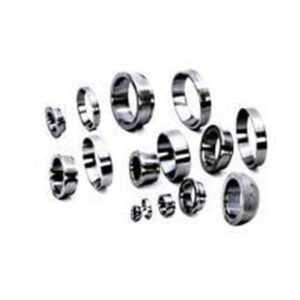
Here’s an introduction to key Machine Tools used in machining (metalworking focus):
Lathe:
Function: Primarily for Turning operations. Rotates the workpiece against a stationary cutting tool to remove material.
Processes: Turning (external cylindrical surfaces), facing (flat surfaces on the end), boring (enlarging internal diameters), threading (external/internal threads), tapering, grooving, parting (cutting off).
Key Components: Headstock (holds spindle/chuck), Tailstock (supports long workpieces), Carriage (holds & moves tool post), Bed (main base).
Variants: Engine Lathe (standard), Turret Lathe (multiple tools on turret), CNC Lathe (computer-controlled), Vertical Lathe (for large diameter parts).
Milling Machine:
Function: Uses a rotating multi-point cutting tool to remove material from a stationary or feed-moving workpiece.
Processes: Face milling (flat surfaces), peripheral milling (profiles, slots), drilling, boring, slotting, contouring, gear cutting.
Key Components: Base, Column, Knee (adjusts height), Saddle & Table (hold & move workpiece), Spindle (holds rotating cutter), Arbor/Cutter Holder.
Variants: Vertical Milling Machine (spindle vertical), Horizontal Milling Machine (spindle horizontal), Universal Milling Machine (table can swivel), Bed Mill (knee-less, rigid bed), CNC Machining Center (highly automated, often multi-axis).
Drilling Machine (Drill Press):
Function: Primarily designed to create cylindrical holes using a rotating drill bit.
Processes: Drilling (new holes), Reaming (smoothing/enlarging holes), Counterboring/Countersinking (creating recesses for bolt heads), Tapping (cutting internal threads).
Key Components: Base, Column, Table (adjustable height), Head (contains motor & spindle), Spindle (holds drill chuck), Feed Handle.
Variants: Bench Drill Press (small), Floor Drill Press (large), Radial Arm Drill Press (drill head moves on arm over workpiece), CNC Drilling Machine.
Grinding Machine:
Function: Uses an abrasive grinding wheel to remove material, achieving very high precision and fine surface finishes.
Processes: Surface grinding (flat surfaces), Cylindrical grinding (external/internal diameters), Centerless grinding (external diameters without centers), Tool & Cutter grinding (sharpening tools), Creep Feed Grinding (deep cuts).
Key Components: Grinding wheel, Wheel head, Workholding device (magnetic chuck, centers, chuck), Table or headstock/tailstock for workpiece movement.
Variants: Surface Grinder, Cylindrical Grinder (between centers), Centerless Grinder, Tool & Cutter Grinder, Jig Grinder (high-precision holes).
Machining Center:
Function: A highly advanced, CNC-controlled machine tool, typically integrating milling, drilling, and boring capabilities. Often features automatic tool changers (ATC) and pallet changers.
Processes: Combines milling, drilling, tapping, boring, contouring in a single setup (minimizing handling).
Key Components: CNC control unit, Enclosed work area, Automatic Tool Changer (ATC), Tool magazine, Pallet system (optional), Multi-axis capability (3-axis, 4-axis, 5-axis common), Coolant system.
Variants: Vertical Machining Center (VMC – spindle vertical), Horizontal Machining Center (HMC – spindle horizontal, better chip evacuation), 5-Axis Machining Center (complex geometries).
Electrical Discharge Machining (EDM) Machine:
Function: Removes material using controlled electrical sparks (discharges) between an electrode and the workpiece submerged in dielectric fluid. Works with conductive materials regardless of hardness.
Processes: Die Sinking (RAM/Sinker EDM – complex cavities), Wire EDM (cutting intricate profiles using a thin wire electrode).
Key Components: Power supply, Electrode (shaped or wire), Dielectric fluid system, Servo control system, Work tank.
Additive/Hybrid Machines:
Function: Combine traditional subtractive machining (milling) with additive manufacturing (depositing material, e.g., laser cladding, DED) in a single platform.
Purpose: Repair parts, add features to existing parts, create complex internal structures, apply wear-resistant coatings.
Key Trends & Capabilities:
CNC (Computer Numerical Control): Dominates modern manufacturing. Uses programmed instructions (G-code) to control machine movements, speeds, feeds, and tool changes with high precision and repeatability. Enables complex geometries and automation.
Multi-Axis Machining: Machines with 4 or 5 axes (beyond standard X, Y, Z) allow complex parts to be machined in a single setup, reducing errors and increasing efficiency (e.g., 5-axis milling, turning centers with Y-axis and live tooling).
Automation: Integration of robots for loading/unloading parts, pallet systems, and automated guided vehicles (AGVs) create flexible manufacturing systems (FMS).
High-Speed Machining (HSM): Uses specialized tools, spindles, and controls to achieve much higher cutting speeds and feed rates, improving productivity and surface finish.
Precision & Accuracy: Modern machines achieve tolerances in the microns (µm) range.
Materials: Capable of machining metals (steel, aluminum, titanium, superalloys), plastics, composites, and ceramics (often requiring specialized processes like grinding or EDM).
These machine tools form the backbone of discrete parts manufacturing, enabling the creation of components found in everything from engines and aerospace structures to medical devices and consumer electronics. CNC technology has revolutionized their capabilities, making them faster, more precise, and more versatile than ever before.





